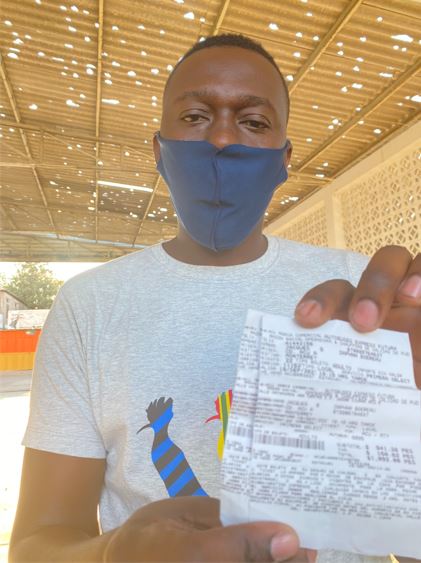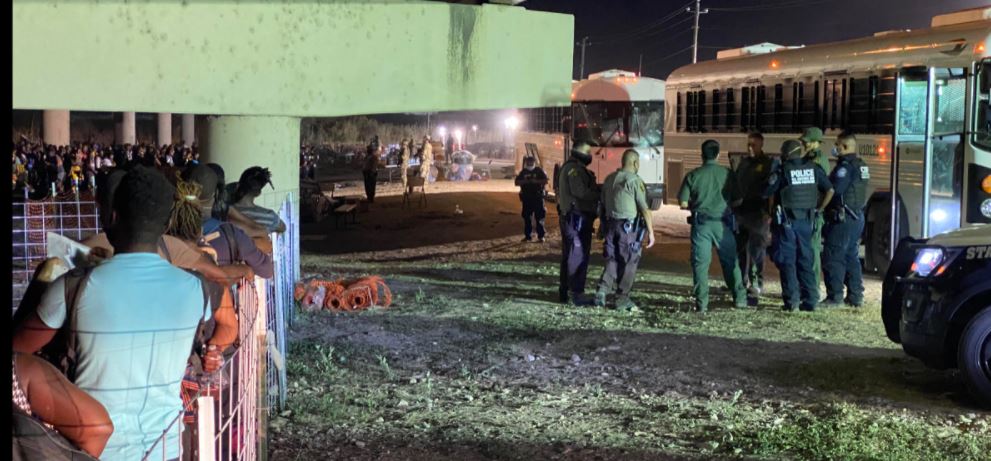
The Del Rio Mass Migrant Encampment September 2021
From September 15-24, I covered the Del Rio migrant camp crisis on both the Texas and Mexico sides of the Rio Grande. During this period and after, a wide range of media interviewers came calling. Following is a representative collection during the latter half of September 2015 for researchers interested in understanding the events in Del Rio, Texas and in Mexico, although the interviews actually granted were too numerous to list comprehensively here.

A New Beachhead Opens in the Biden Border Crisis
15,000 Haitians and Cubans mass in Del Rio, Texas, amid obvious Border Patrol stand-down orders
DEL RIO, Texas – Thousands of mostly Haitian migrants (joined by Cubans and other nationalities) have poured entirely unopposed across the Rio Grande and occupied a massive beachhead here on the Texas side that is unparalleled in size, filth, and as an escalating management challenge to a Joe Biden administration that has so far refused to publicly acknowledge it. But this remarkable development in the border crisis will not be ignored for long as hundreds of new migrants per hour arrive, far faster than Border Patrol agents and National Guard personnel process them. In barely a week, the number of illegal immigrants who have walked over a cyclically low Rio Grande reached 10,000, city officials – notably not federal representatives – said Thursday during a tightly managed press “tour” arranged by the city of Del Rio that was stopped some 200 yards from the migrants. The numbers appear to be growing by the hour with no end in sight, ballooning from some 2,000 on Sunday to 6,000 by Wednesday, to 8,000 by Thursday morning and then to 10,000 by that evening.
“In my 20-year career, I have never seen anything this out of control,” one CBP officer told CIS.

Why the Huge Illegal Alien Camp Formed in Del Rio
A surprising explanation from the migrants themselves
As federal and state authorities work to shutter the migrant shantytown, a basic necessary question has gone unasked and unanswered: Why did this happen? The answer to that might better inform any American response to make sure it never happens again, with an encampment of that size’s latent public safety and national security threat. To find the answer, this writer came to Ciudad Acuna, the city through which the migrants had passed to form the encampment and asked several dozen of them what happened. The surprising answer, which the migrants provided independently in different places and at different times, was universal: on Sunday, September 12, the Mexican government effectively sent a mass of migrants it had bottled up for months in its southern states up to the American border. This move, which appears to have been done under the cover of Mexico’s independence week of celebration known as El Grito, essentially foisted a humanitarian problem onto the Americans in a single week.

Biden Administration’s Air Deportations to Haiti Send Some Fleeing Back to Mexico
Buying bus tickets back to Tapachula in the south
CIUDAD ACUNA, Mexico — An uncharacteristic policy choice by President Joe Biden’s administration to begin deporting Haitian migrants from the Del Rio, Texas, camp to Port-au-Prince, Haiti, struck immigrants here with such force that dozens are boarding buses and returning the way they came, angered or saddened and unwilling even to risk any alternative attempt to cross elsewhere. Late Sunday, this writer found and interviewed dozens of Haitians in the Ciudad Acuna bus station buying south-bound tickets to get as far away from Texas as possible — a stark reversal from just days earlier when cavalcades of buses arriving from southern Mexico were disgorging Haitians headed to the Del Rio encampment. Over the weekend, the Department of Homeland Security removed 3,300 of the Haitians from the camp and flew 327 to Port-au-Prince, Haiti’s capital. DHS announced that daily flights will continue.

Where Are Del Rio’s Haitians Going?
According to the migrants interviewed by Bensman, they retreated southward from Texas out of fear of deportation to Haiti. They have been getting messages for three days from Haitians who have been deported; those deported include men, women, and children. Their friends who have been deported are saying to stay away from the American buses they are being asked to board. They are claiming that they were led to believe that the buses were taking them into the U.S., but instead they were taken to the airport and flown to Port-au-Prince, Haiti.

PODCAST: Del Rio, A Case Study of the U.S. Illegal Immigration Crisis
Parsing Immigration Policy, Episode 22
September 23, 2021
Thousands of illegal aliens poured into Del Rio, Texas last week forming an encampment that eventually peaked with an estimated 15,000 migrants. Thousands of mostly Haitians, but also Cubans and other nationalities, waited for processing to enter the country as an overwhelmed Biden administration struggled to control the growing camp, and Texas moved to stop the numbers from going even higher. After several days of watching the numbers multiply, the Biden administration moved to control the political damage of the shantytown, and began deporting some Haitians to their native country; however, most of them had been living and working in Brazil and Chile for years, and fled to Mexico instead of risking deportation. But an even larger number of the illegal aliens were rewarded for their efforts and appear to have been paroled into the United States. Thousands more continue to wait in the shrinking encampment. Todd Bensman, the Center’s senior national security fellow, has spent the week in Del Rio and across the Rio Grande in Mexico talking with migrants to understand why they came to Del Rio and why now. In this week’s episode of Parsing Immigration Policy, he answers both of those questions and describes the situation on the ground.

Takeaways from the Del Rio Migrant Camp: What Now?
The 15,000 of the Del Rio camp, however shiny a bauble it was for network news cameras, amount to a typical Texas breakfast hour on any given day, so vast is the crisis that spawned their riverbank shanty town. Two main actionable takeaways from Del Rio that the White House, Congress and the US media should know, study and actually apply to significantly temper the crisis that birthed Del Rio, are that:
Rolling out repatriation flights to home nations as a credible threat proved to be a magic pill for sharply reducing mass illegal immigration and should be retained and expanded to the rest of the border and other nationalities now.
Del Rio revealed a deeply troubled US-Mexico diplomatic relationship that relied on carrots but requires a radically different American approach that involves the stick, which proved miraculously effective during September.